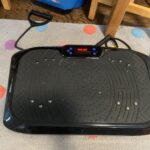What is Sensory Integration?
Sensory integration allows us to take information we receive from our 5 basic senses (visual, auditory, olfactory/smell, gustatory/taste, and tactile) and our 3 additional senses (vestibular, proprioception, and interception) and organize it, allowing a person to react and respond appropriately. Appropriately integrated sensory information is necessary in order for a child to develop appropriately and similarly to other children his or her age.
There are various systems that play an important role in sensory integration, including but not limited to, the proprioceptive system and the vestibular system. Proprioception refers to a person’s body segments in space as well as their perception of body movement. The proprioceptive system allows a child to orient themselves in space, time their movements, and grade their pressure and force during tasks.
The vestibular system provides a person with unconscious information from their inner ear about their movement and position in space and change in head position. This system is important in maintaining muscle tone, coordinating the two sides of the body, and postural control. A child can present as having an excessive need, such as craving constant movement, or may have a defensive behavior towards vestibular input, such as being anxious when one’s feet are off the ground.
The vestibular system intercorrelates with the auditory system as well, as they both sharing a neural pathway to the brain. Because they are connected by this pathway (a nerve), if one pathway is affected, so is the other. The inner ear is also filled with semicircular canals, which respond to angular acceleration and shift in movements. The messages that your brain receives from these changes in position, as well as what you hear, helps you keep your balance. It’s important to recognize that the ear is more than just an auditory organ, but also a motor organ.
How does this relate to Therapeutic Listening?
Modulation is a person’s ability to regulate one’s response to sensory information in order to maintain an optimal state of arousal for learning focus and attention in order to functionally and meaningfully participate within their environment.
Therapeutic Listening is a sound-based intervention that is embedded in the sensory integration perspective. The sound simulations produced by the program’s music compilations (music chips) appear to calm, organize, and modulate a child’s behavior in preparation for activities and tasks. The auditory system connects to multiple parts of the brain, affecting the nervous system. Auditory input contributes to arousal, self-regulation, and emotional awareness. In short, the auditory system can affect the way your child reacts and responds. Research also states that this system impacts spatial-temporal organization and visual-motor skills, all of which can have an impact on your child’s handwriting, coordination of movements, perceptual-motor tasks, and various other daily requirements.
Through various studies, results indicate that the Therapeutic Listening Program improves attention, interaction with peers, greater self-awareness, improved sleep patterns, and more consistency in following directions.
 All sounds involve vibrations, but music incorporates structured and organized vibrations. Music varies from simply rhymes and melodies to more intense and multi-layered patterns. The music chips within the Therapeutic Listening Program are modified to naturally trigger the parts of the brain that initiate attention, body movement, and self-organizing capacities. Your child will work his or her way through a series of music compilations and increase complexity as they move along the program.
All sounds involve vibrations, but music incorporates structured and organized vibrations. Music varies from simply rhymes and melodies to more intense and multi-layered patterns. The music chips within the Therapeutic Listening Program are modified to naturally trigger the parts of the brain that initiate attention, body movement, and self-organizing capacities. Your child will work his or her way through a series of music compilations and increase complexity as they move along the program.
The chips also challenge listening skills, as sounds fluctuate between 3000 hertz below and above normal listening frequency. This activates exercises and strengthens the stapedius muscle, which has an important role in sound transmission. This muscle stabilizes the stapes bone, which functions to send sound vibrations throughout the ear. This muscle and bone work together to limit vibrations when you hear loud noises, such as fire alarms or sirens.
Where does this intervention take place?
Although this program can be done across settings, it is primarily done in a home-based setting. This program must be implemented and motioned by a therapist who has undergone and completed courses and training. To order the tools required for this program, a course completion code is required.
Important things to note when starting this program:
*No screen time while partaking in the listening
*2 times a day for 30 minutes (can work up to this, start with 20 minutes and increase)
*Sessions should be no less than 3 hours apart
*Music should be kept at ¾ volume; your child should still be able to hear you, the music is background noise.
CD Progression:

To learn more about this specific program, Therapeutic Listening, click the following link: https://vitallinks.com
To purchase the music compilations/music chips, click on the following link: https://vitalsounds.com






